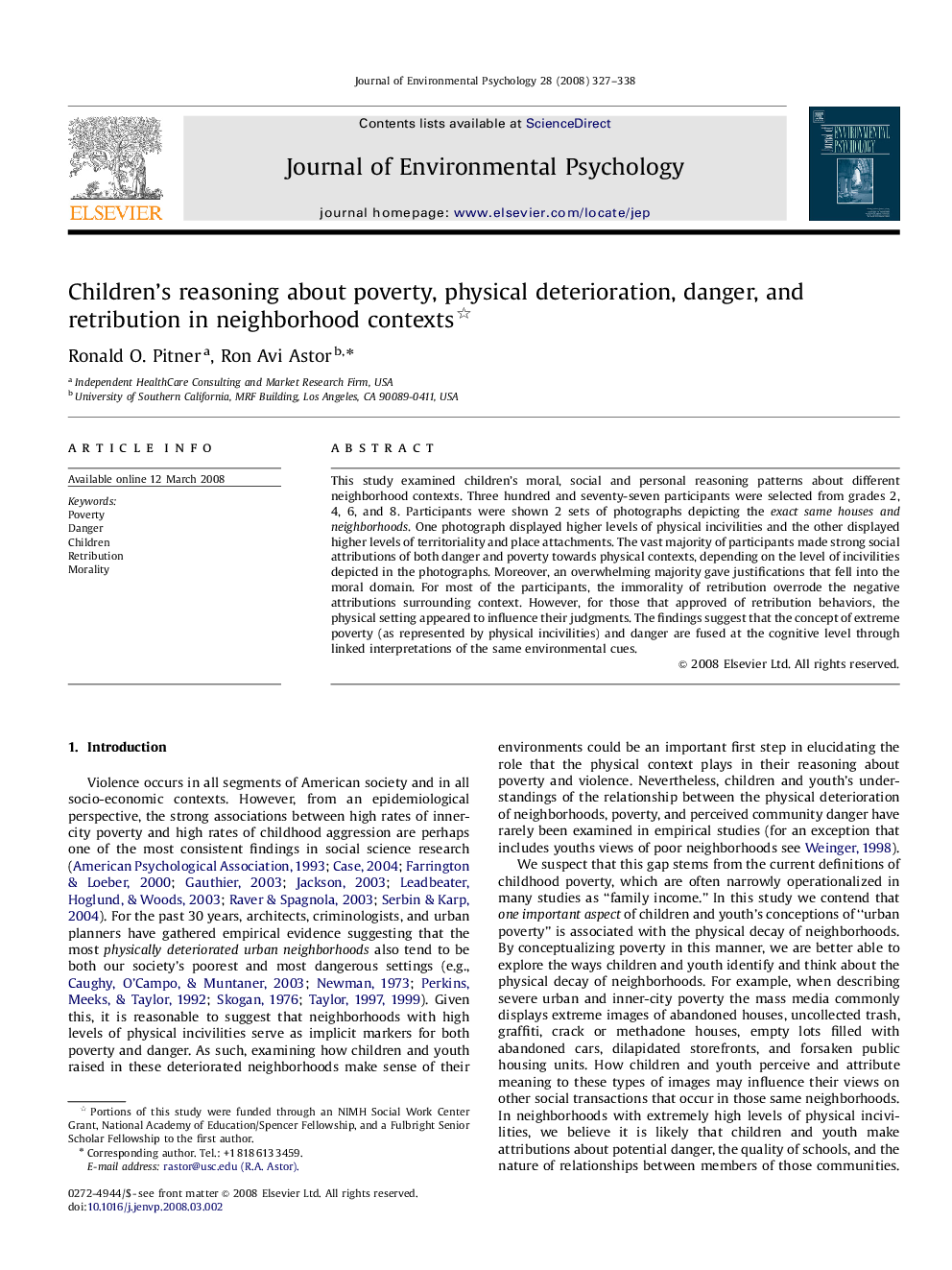| Article ID | Journal | Published Year | Pages | File Type |
|---|---|---|---|---|
| 885847 | Journal of Environmental Psychology | 2008 | 12 Pages |
This study examined children's moral, social and personal reasoning patterns about different neighborhood contexts. Three hundred and seventy-seven participants were selected from grades 2, 4, 6, and 8. Participants were shown 2 sets of photographs depicting the exact same houses and neighborhoods. One photograph displayed higher levels of physical incivilities and the other displayed higher levels of territoriality and place attachments. The vast majority of participants made strong social attributions of both danger and poverty towards physical contexts, depending on the level of incivilities depicted in the photographs. Moreover, an overwhelming majority gave justifications that fell into the moral domain. For most of the participants, the immorality of retribution overrode the negative attributions surrounding context. However, for those that approved of retribution behaviors, the physical setting appeared to influence their judgments. The findings suggest that the concept of extreme poverty (as represented by physical incivilities) and danger are fused at the cognitive level through linked interpretations of the same environmental cues.
